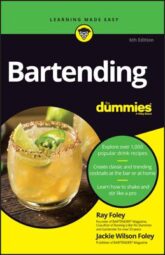Types of Scotch whisky
Two kinds of Scotch whisky are distilled: malt whisky (from barley) and grain whisky (from cereals). Malt whiskies are divided into four groups according to the geographical location of the distillery in which they're made:-
Lowland malt whiskies: Made south of an imaginary line drawn from Dundee in the east to Greenock in the west.
-
Highland malt whiskies: Made north of the aforementioned line.
-
Speyside malt whiskies: Made in the valley of the River Spey. Although these whiskies come from within the area of the Highland malt whiskies, the concentration of distilleries and the specific climatic conditions in Speyside produce whiskies of an identifiable character, which is why they're classified separately.
-
Islay malt whiskies: Made on the island of Islay.
 ©Illustration by Lisa Reed
©Illustration by Lisa Reed
Grain distilleries are mostly found in the central belt of Scotland, near the cities of Glasgow and Edinburgh. Single-grain whiskies display individual characteristics in the same way as malts, although the geographical influence isn't the same.
Married together, malt whiskies and grain whiskies create blended Scotch whisky, which accounts for 95 percent of world sales. A blended whisky can have many (up to 50) different types of malt whiskies blended with grain whisky (from cereals). As you may expect from the name, a single-malt Scotch whisky is made from one type of malt, and it's not blended with other malts or grain whiskies.
How Scotch is made
Making Scotch whisky from malts dates back to 1494 to Friar John Cor and his fellow friars. Until the mid-1800s, nearly all Scotches were single-malt. Then Andrew Usher came up with the idea of mixing malt whisky and grain whisky to create blended Scotch whisky. Here's how the process works:-
The barley is malted, or soaked and dried for germination.
During this period, the starch in the barley converts to fermentable sugar.
-
To stop the germination, the malted barley is smoked, usually over peat fires in open malt kilns, giving Scotch whisky its smoky taste.
-
The barley is mixed with water and yeast. Fermentation takes place, and alcohol is the result.
This liquid is then usually pumped into stills and double-distilled until the correct proof is attained.
-
After distillation, the whisky is typically placed in used American oak wine or bourbon barrels (some distillers use sherry casks or wood from other countries); these are then aged by law for a minimum of three years.
Most Scotch whiskies age from five to ten years, sometimes much longer. It's said that the longer a whisky ages in the barrel, the smoother it becomes.
Storing and serving suggestions
Scotch can be served over ice, straight up, with water or club soda, or in a variety of mixed drinks. Single malts and aged Scotch whisky (over 12 years) can be served straight up or on the rocks with a splash of water. After opening, store a bottle of Scotch whisky in a cool, dry place out of direct light. It should have a shelf life of approximately two years.Whisky doesn't improve with age after it's bottled.

